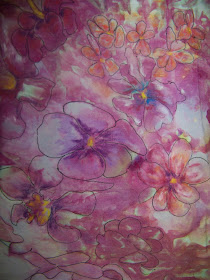Plug in your irons, warm up your stencil/solder irons, and get those heat guns out. It's nearly October and while the weather is still warm enough to work outside, we're going to really heat it up. That's right -- I may take things a little bit literally sometimes, but it's time to set it on fire!
OK -- not really open flames, but I want to explore the effects of heat on textiles, Tyvek, Lutradur and other poly/interfacing type substances. And anything else that might be enjoyably altered by a judicious application of heat.
OK -- not really open flames, but I want to explore the effects of heat on textiles, Tyvek, Lutradur and other poly/interfacing type substances. And anything else that might be enjoyably altered by a judicious application of heat.


















































